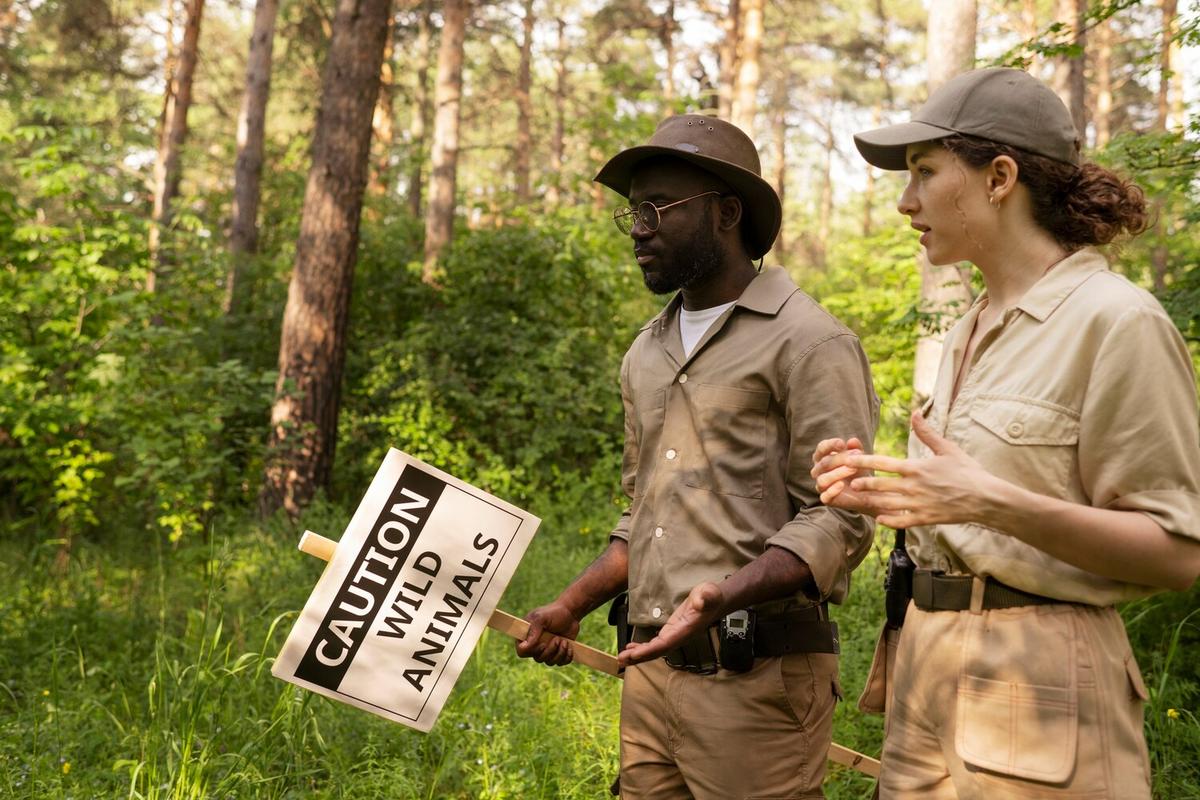
These mistakes should be avoided when wildlife watching on foot
Embarking on a wildlife watching adventure on foot can be an exhilarating experience, offering a unique opportunity to connect with nature and observe animals in their natural habitats. However, to ensure a safe and respectful encounter for both the observer and the wildlife, it’s crucial to avoid common mistakes. In this blog post, we’ll explore these pitfalls and provide actionable advice to enhance your wildlife watching experience.
Understanding Wildlife Watching Etiquette
When venturing into the wild, it’s important to remember that you are a guest in the animals’ home. Observing proper etiquette not only ensures your safety but also minimizes stress and disruption to the wildlife. According to the National Park Service, maintaining a respectful distance from animals is essential to avoid altering their natural behavior or causing them distress.
Common Mistakes to Avoid
1. Getting Too Close
One of the biggest mistakes people make is getting too close to the animals. Not only can this be dangerous, but it can also cause the animals to feel threatened. The World Wildlife Fund recommends staying at least 100 yards away from predators and 25 yards from other wildlife to ensure a safe and respectful distance.
2. Making Loud Noises
Loud noises can startle wildlife and disrupt their natural behaviors. Instead, strive for quiet observation. Use hand signals when communicating with your group to minimize noise.
3. Feeding the Wildlife
Feeding animals can seem harmless, but it can lead to dependency on humans for food and alter their natural foraging habits. According to the Leave No Trace Center for Outdoor Ethics, feeding wildlife is detrimental to their health and can lead to dangerous situations for both animals and humans.
4. Ignoring Park Rules
Every wildlife area has specific rules designed to protect both visitors and animals. Ignoring these rules can lead to serious consequences. Always familiarize yourself with the guidelines of the area you’re visiting.
Expert Advice
Dr. Mark Johnson, a wildlife biologist, emphasizes the importance of patience and respect when observing animals. “Wildlife watching is about appreciating animals in their natural environment without interfering. Patience and respect are key to a rewarding experience,” he notes.
Relevant Statistics
According to a study by the International Union for Conservation of Nature (IUCN), human activities, including wildlife watching, can impact animal behavior and stress levels. The study found that animals in frequently visited areas exhibited higher stress indicators compared to those in less visited areas.
Personal Anecdotes
During a recent trip to Yellowstone National Park, I witnessed a group of tourists getting too close to a herd of bison. The bison became agitated, and the situation could have turned dangerous. This experience reinforced the importance of maintaining a safe distance and respecting wildlife.
Actionable Tips
- Carry binoculars or a zoom lens to observe animals from a safe distance.
- Wear neutral-colored clothing to blend in with the environment.
- Avoid wearing strong perfumes or lotions that can attract or repel animals.
- Always stay on marked trails to minimize your impact on the ecosystem.
Pro Tip: Bring a field guide to help identify animals and learn more about their behaviors and habitats.
Comparison Table: Do’s and Don’ts of Wildlife Watching
| Do’s | Don’ts |
|---|---|
| Maintain a safe distance | Get too close to animals |
| Stay quiet and calm | Make loud noises |
| Observe animals with binoculars | Use flash photography |
| Follow park rules | Ignore guidelines |
| Wear neutral clothing | Wear bright colors |
| Respect wildlife signs | Feed the animals |
| Stay on marked trails | Venture off-trail |
| Leave no trace | Leave trash behind |
FAQ
What should I do if an animal approaches me?
Remain calm, avoid sudden movements, and slowly back away to maintain a safe distance.
Is it safe to go wildlife watching alone?
It’s always safer to go in groups, but if you must go alone, inform someone of your plans and carry a communication device.
Can I bring my dog on a wildlife watching hike?
Check the specific area’s regulations. Pets can sometimes disturb wildlife and may not be allowed.
Conclusion
Wildlife watching on foot is a rewarding experience when done responsibly. By avoiding these common mistakes and following the provided tips, you can ensure a safe and respectful encounter with nature. Remember, the goal is to observe and appreciate wildlife without impacting their natural behaviors. Get out there, stay safe, and enjoy the wonders of the wild!


